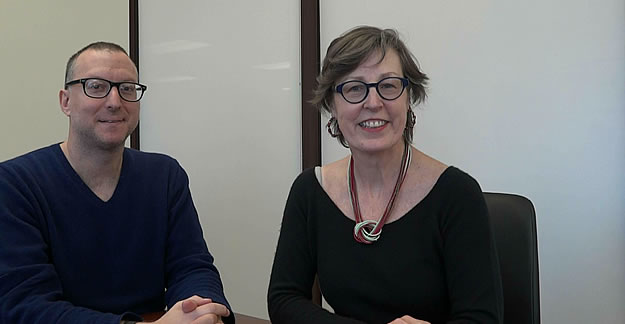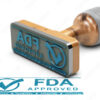In this episode, MedShadow founder Su Robotti discusses her first experience as an appointee to the FDA Drug Safety and Risk Management Advisory Committee. The Committee discussed the delivery system of a strong opioid called Opana.
Su Robotti: Hello my name is Suzanne Robotti and I’m the founder of MedShadow. And today, I’m with —
Jonathan Block: Jonathan Block and I’m the content manager here at MedShadow.
SR: I recently was appointed to the FDA’s Advisory Committee on Drug Safety and Risk Management, and Jonathan is full of questions about it.
JB: Absolutely, first of all, to start off, what was the purpose of your first meeting with the committee that you just were at in Washington, DC?
SR: Sure. The question about the drug in front of the committee was Opana and that is a hydromorphone drug, used for pain management. It was two committees, actually, sat together. The Drug Safety and Risk Management Committee, which I’m on, and also the Analgesics Committee which is the committee on pain management. Their panel, let’s see, there are 27 of us, all together there that is combined panels, and most of the people sitting there were epidemiologists, who are doctors that focused on how diseases go through an entire society that brought concepts of disease, and also analgesics specialist, pain specialist. I, represented, I’m a consumer representative on the Drug Safety and Risk Management Committee. So my responsibility is to bring the consumer’s point of view to the table.
JB: Great. Now, our audience may not be aware that Opana is an opioid type pain killer, which has its own set of issues. More specifically, what was the purpose of this meeting in terms of what about Opana was under debate?
SR: Well, Opana was reformulated about 4 years ago, 5 years ago to add a new coating on it that would it much more difficult to crush, or to crush or press it to inject it, in an attempt to make it abuse deterrent or AD. So initially, they thought that if they put this coating on it, they would be able to add “Opana ER,” that’s extended-release, and add AD to it for its deterrent. But the post-marketing studies, of the how the drug was accepted into society, how it was used by doctors and by patients, showed that it wasn’t actually abused deterrent, but it shifted to the style of abuse, the type of abuse to the drug.
JB: Can you explain how it shifted?
SR: Sure. The abuse method of choice with Opana, but before its extended-release, but before it had this coating on it, was to crush it and to either chew it and swallow it or to crush it and snort it, or abuse it nasally, as they would say. After this hard coating went on it, it was very difficult to crush, impossible to just, I think impossible to chew and crush it, and when it did crush, it turned into a gel-like substance which theoretically is more difficult to ingest. Unfortunately, what happened was that it did deter snorting Opana, but addicts quickly shifted over to working with the gel, watering into a more liquidly substance and shooting it intravenously.
JB: Wow, that sounds very dangerous. Were there any additional problems besides your still addicting drug shooting it your arm? What sort of additional problems popped up?
SR: What they did find was that Opana, and again, I should say, that the entire hearing is available on the FDA website to watch and listen to the expert testimony and the doctors’ comments on it. So, my comments here are really what my impressions, my recollections and mu understanding was on, not on a medical expert. So having sat on this committee, I think I can say with clarity that the difference between snorting a drug and injecting a drug is the needle stick into the skin because Opana tends to be a quick-acting drug when broken in the extended release method and crush it and liquidated it. It’s a quick high that it goes down fast. So that those who are truly addicted to it, and that having to inject themselves or feeling that they have to inject themselves 3 or 4 times a day, with other skin pricks, veins start to collapse, infections starts, sepsis can set in which is very dangerous, and the transmission because of shared needles, and another reason, Hep C and HIV becomes common among these type of abuse.
JB: So what did you end up voting on, what’s the question or questions of what was the vote?
SR: The bottom question that was put in — there were several discussions questions that lead into the final vote, and the final vote was the question — does the risk of Opana ER still outweigh the benefits? Obviously, when it was first approved, the decision was, yes, the benefits outweigh to this, but I voted, at this point, it doesn’t. I, based on the information that was presented and the comments of the doctors at the table, that the risk of an intravenously abused drugs far outweighs the risks of a nasally abused drug and what one hopes, when you have an addict in the family, one hopes to keep the addict alive until somewhat rehab or program can help that addict and bring them back to a healthful lifestyle. With nasal drug abuse, that’s only going to hurt your own sinus cavity. With an intravenous drug, you get into sepsis and HIV and Hep C which just makes your company so much more difficult.
JB: So what happens at this point now that your committee and with the joint committee, now that this has happened, what happens to Opana ER? Does it get removed from the market, does the labeling have to be changed, is there some change to the labeling that the manufacturer wanted but now it won’t get? What happens now with that drug?
SR: Well, you have to go to the FDA for bringing Opana back into the table to discuss not just the AD labeling which is, you know, not something that it was ever going to happen on this case based on the studies done. But the FDA went back to discuss, really how can we move this profile from high risk to less risk. And it’s up to the FDA staff, at this point. What will ultimately happen, we are an advisory committee, the vote on the advisory committee were 18 people who agreed, who voted in the same way that I did, that the benefits no longer outweigh to the risks There are 8 people who thought that the benefits do start, and 1 person just felt that the scientific research is not strong enough to make a clear a vote on anything.
The committee chair, who is a great chair, has written up the entire proceedings and will be submitting it to the head of the FDA, for the final decision that the FDA can’t actually demand of have it be removed from the market, because they don’t have that power. However, they can change the labeling, they — to add a “black box” warning — they can recommend stronger risk management procedures, more education for doctors, pushing registration for doctors when they prescribe the drug that should be registered in a national list that other doctors know, that this patient potentially is getting multiple prescriptions for that.
So that there are things that the FDA can do, but what I think many people in the committee hope, and what I hope, was that Opana would go back to the drawing board — Endo is the company that makes it — and find a way to make this drug more safe for everybody to use because pain management is a big issue, the world is changing in pain management. It has gone way beyond just opioids, but integrating multiple [approaches] — biofeedback, physical therapy, acupuncture, other ways — so that they can be made part of the pain management profile, which is not be dependent on them alone, and be a stronger and better drug.
JB: Great, Sue. That was at least to me, a very interesting description and accounts of your meeting, thank you so much for sharing it with me, and of course with our MedShadow audience.
SR: I did write a blog on this experience, if you like to look at it, it’s at our website, www.medshadow.org.
JB: Great, thanks very much.
SR: Thank you.






